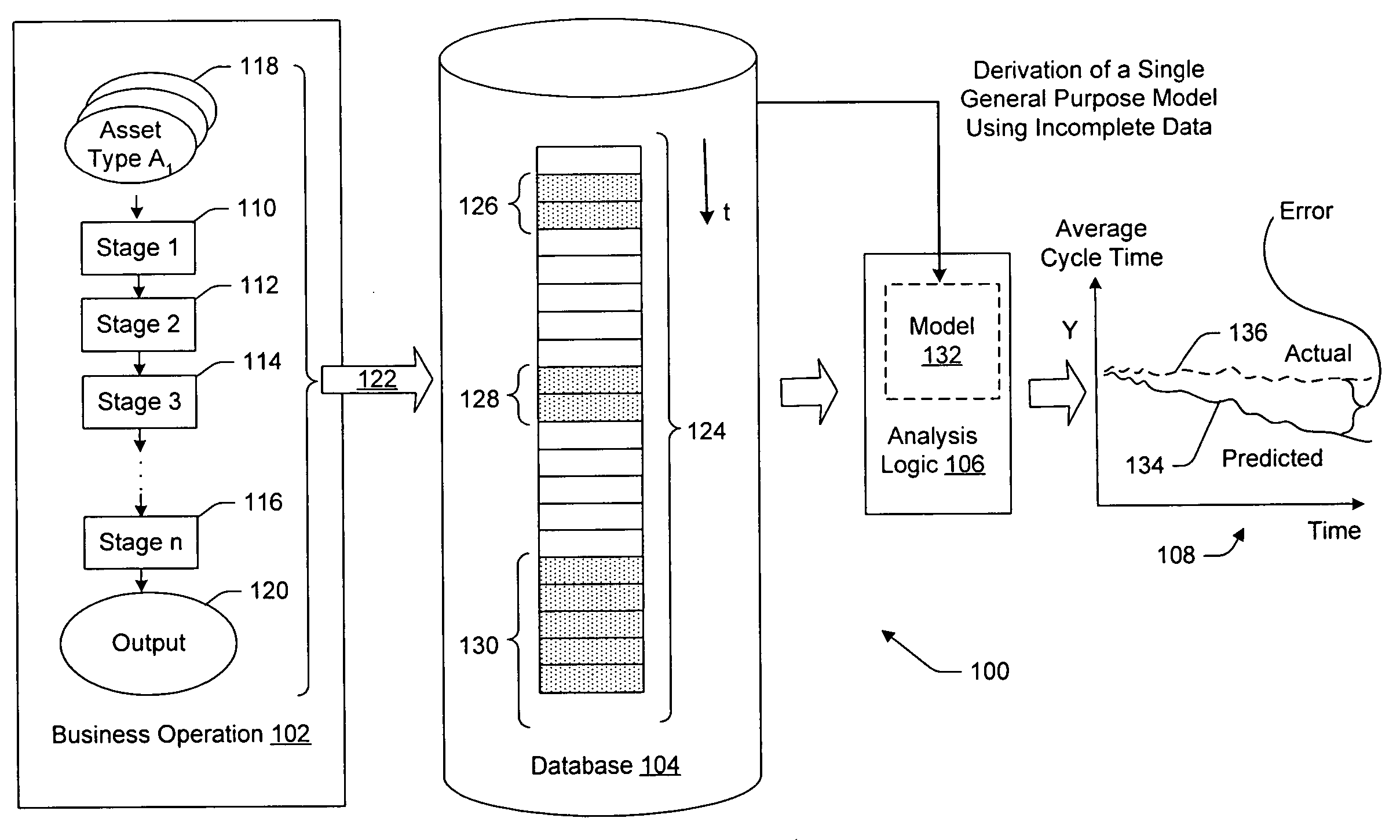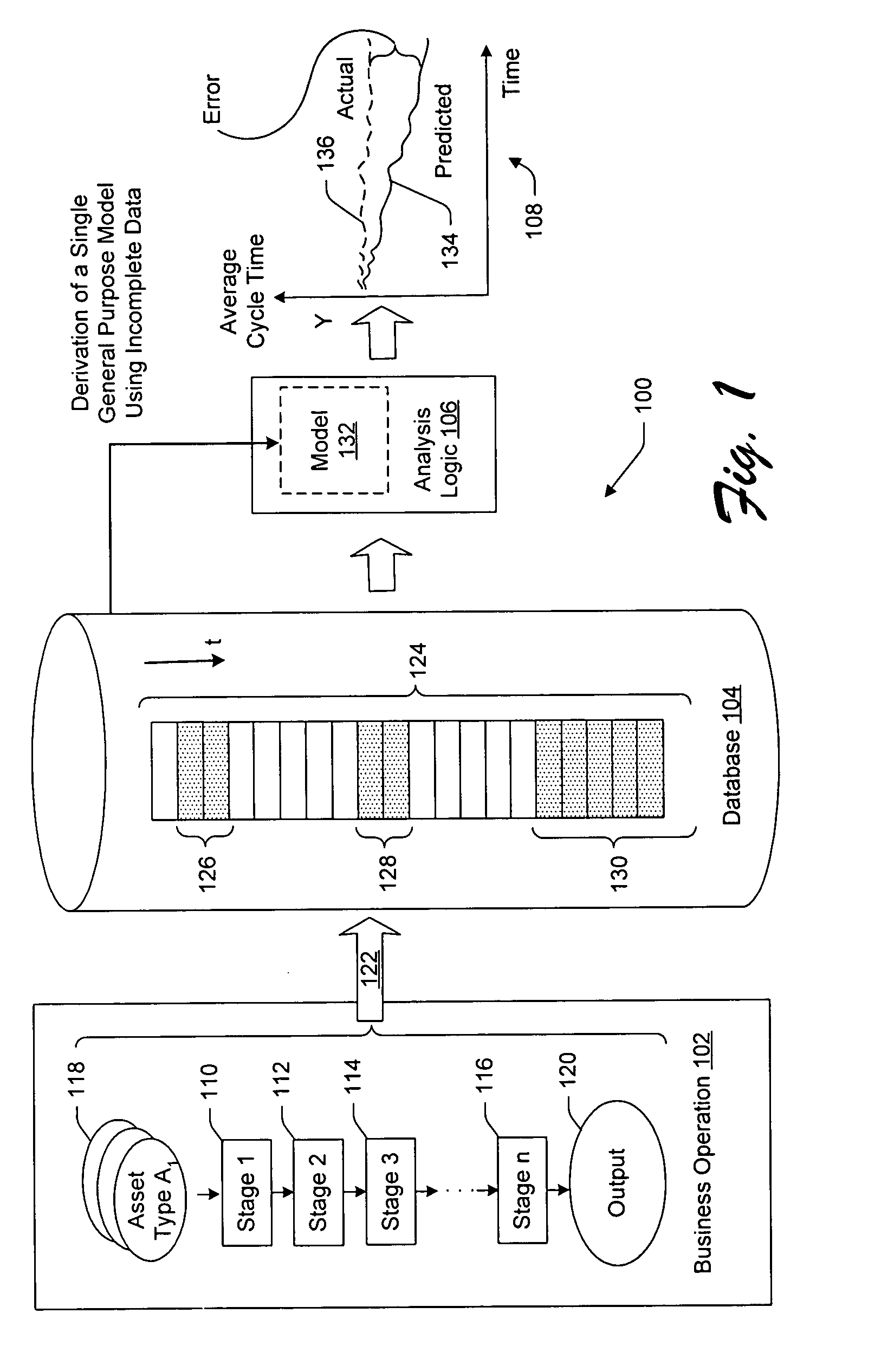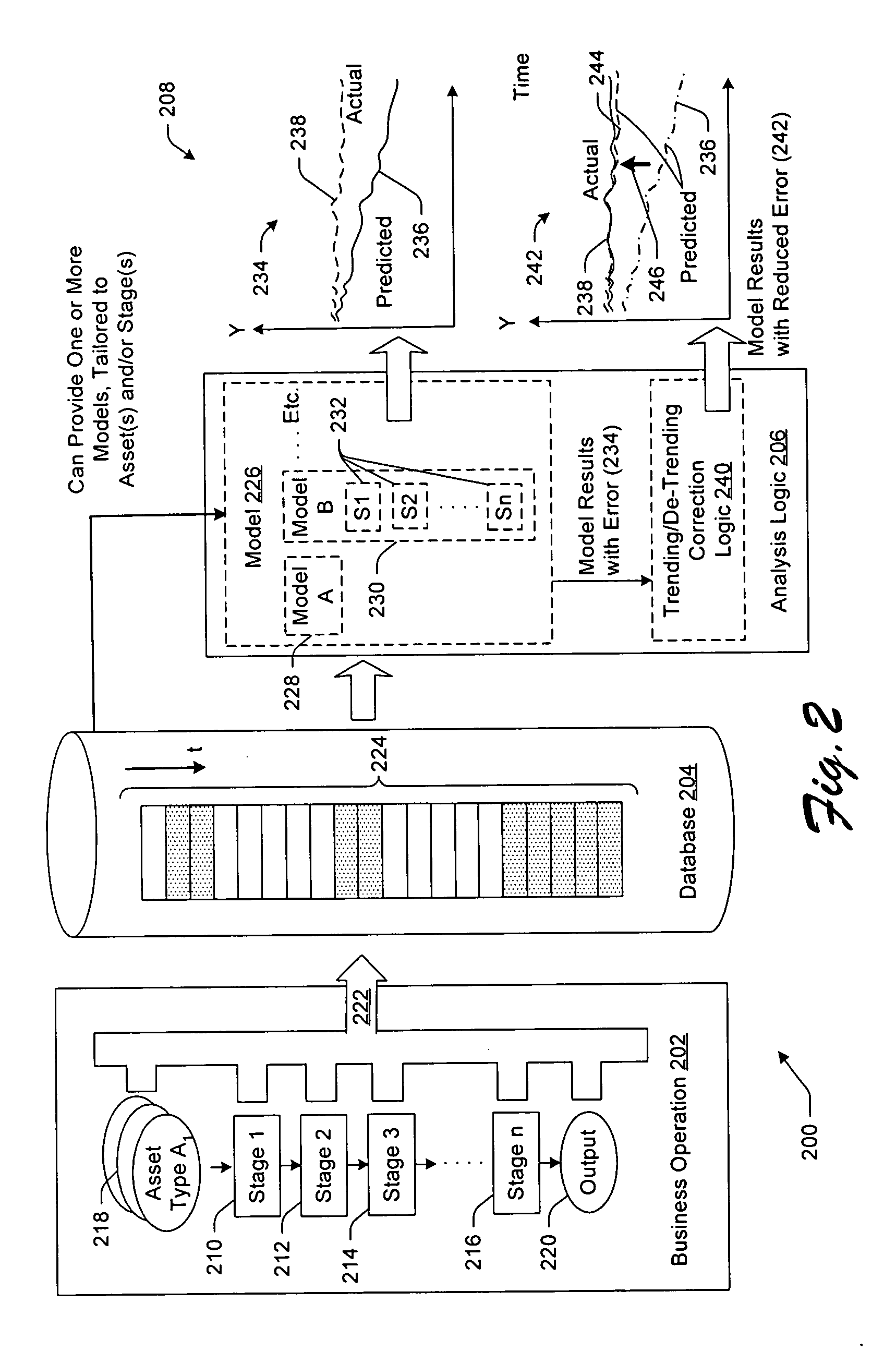Techniques for performing business analysis based on incomplete and/or stage-based data
a business analysis and stage-based technology, applied in data processing applications, instruments, marketing, etc., can solve the problems of difficult to develop and apply accurate analytical models in a “pure” business-related environment, analysts may have much greater difficulty in developing and applying accurate analytical models, etc., to reduce the error in the predicted value
- Summary
- Abstract
- Description
- Claims
- Application Information
AI Technical Summary
Benefits of technology
Problems solved by technology
Method used
Image
Examples
Embodiment Construction
This disclosure pertain to analysis performed in a business-related environment The term “business” has broad connotation. A business may refer to a conventional enterprise for providing goods or services for profit. The business may include a single entity, or a conglomerate entity comprising several different business groups or companies. Further, a business may include a chain of businesses formally or informally coupled through market forces to create economic value. The term “business” may also loosely refer to any organization, such as any non-profit organization, an academic organization, governmental organization, etc.
The business analysis can include various kinds of processing of business-related data. For example, the analysis can constitute formulating predictions that provide an indication of the likely course of a business operation. The analysis can also constitute organizing or summarizing past data in useful ways. These are merely two representative examples of t...
PUM
 Login to View More
Login to View More Abstract
Description
Claims
Application Information
 Login to View More
Login to View More - R&D
- Intellectual Property
- Life Sciences
- Materials
- Tech Scout
- Unparalleled Data Quality
- Higher Quality Content
- 60% Fewer Hallucinations
Browse by: Latest US Patents, China's latest patents, Technical Efficacy Thesaurus, Application Domain, Technology Topic, Popular Technical Reports.
© 2025 PatSnap. All rights reserved.Legal|Privacy policy|Modern Slavery Act Transparency Statement|Sitemap|About US| Contact US: help@patsnap.com



